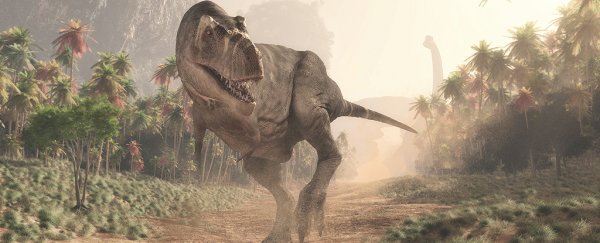Dinosaurs are a diverse group of mostly land-based animals that are related to today's reptiles and birds.
In fact, while dinosaurs are commonly seen as extinct and known only by their fossils, paleontologists technically include modern birds as a surviving group of avian dinosaurs.
Both avian and non-avian dinosaurs evolved from a more ancient group of reptiles roughly 240 million years ago, diversifying in shape and size before mostly dying out in a mass extinction event around 65 million years ago.
In the so-called Mesozoic era, dinosaurs filled just about every imaginable ecological niche on land imaginable.
There are three main clades of dinosaur, or evolutionarily linked categories. Precisely how each of these related to each other is still a matter of debate.
The clade Ornithischians includes familiar names like triceratops and stegosaurus. The term means 'bird hipped', thanks to a pelvis that looks like that of a bird's. Confusingly, birds didn't actually evolve from this group.
Meanwhile, sauropods are the long necked, long tailed creatures like brontosaurus and diplodocus, which often grew to jaw-dropping sizes. These belong to another clade, called Saurischians, or 'lizard hipped'.
And then there are the theropods, like Tyrannosaurus rex and pals. Because nothing can be simple in paleontology, these animals have also been described as a 'lizard hipped' kind of dinosaur, even though they gave rise to avian dinosaurs.
Only a small handful of dinosaur species, such as Spinosaurus, are known to have been at least semi-aquatic (and even then, somewhat awkwardly), with no non-avian dinosaurs known to have taken to the air.
What about those weird flying things in Jurassic Park, you say? Those are pterosaurs, which are technically non-dinosaur reptiles. Still cool, though.
So what makes a dinosaur a dinosaur?
One of the most significant evolutionary features that helped early dinosaurs conquer the land was a simple shift in the position of their legs.
Closely related reptiles had legs positioned to the sides, with their body suspended between them, like a crocodile.
A subtle change in anatomy allowed the legs of dinosaurs to be pulled beneath the body to act as towers rather than bridge supports. This small adaptation meant it took less effort for dinosaurs to move around, allowing them to devote more energy to survival and reproduction, giving them a huge advantage.
In addition to this major anatomical connection, dinosaurs can also be identified by a number of less obvious characteristics. These include a hole in their skull between their eye socket and nostrils and two more holes behind each eye socket; a hole in their hip socket; a uniquely 'hinged' ankle; and at least three sacral vertebrae, which are near the hip.
All topic-based articles are determined by fact checkers to be correct and relevant at the time of publishing. Text and images may be altered, removed, or added to as an editorial decision to keep information current.
